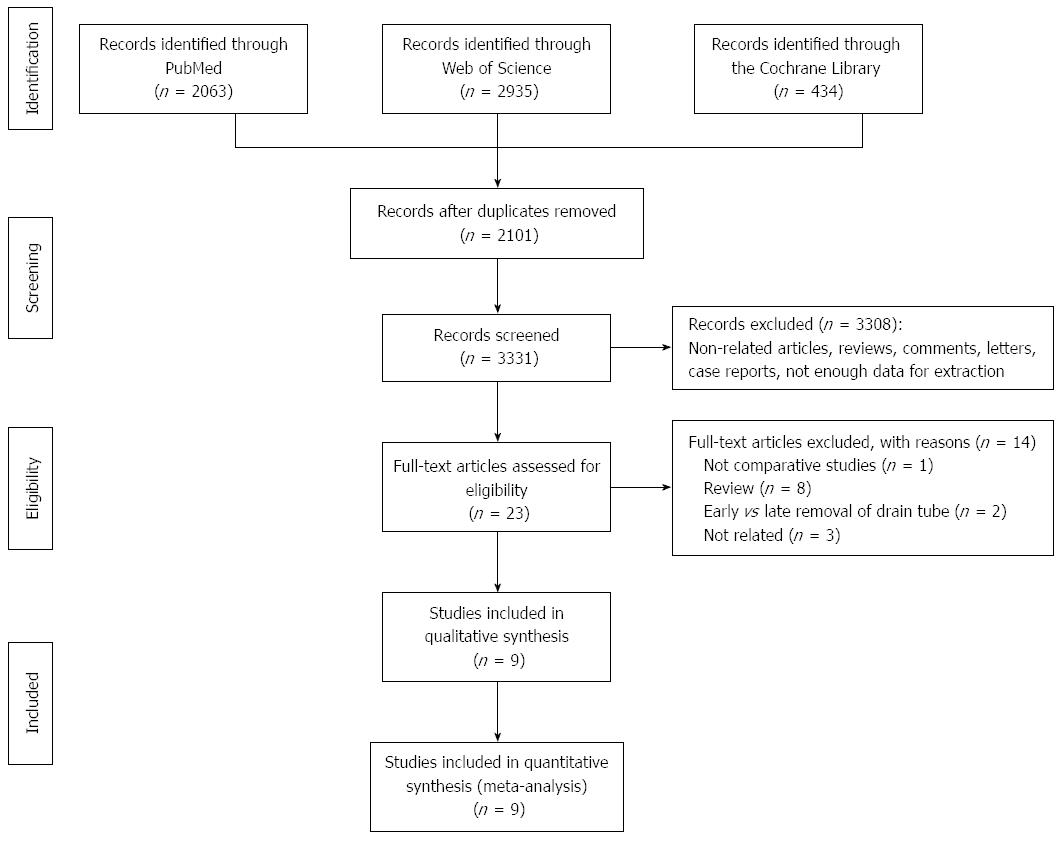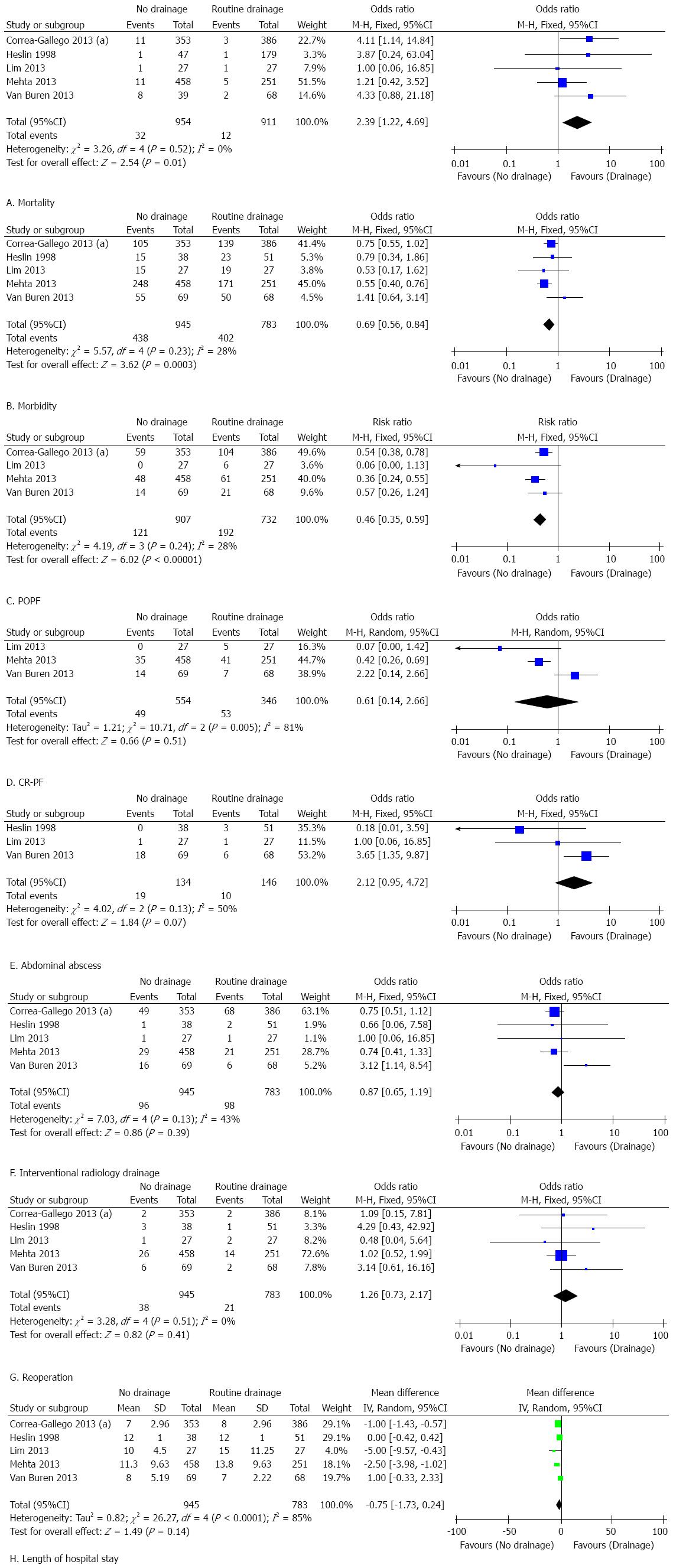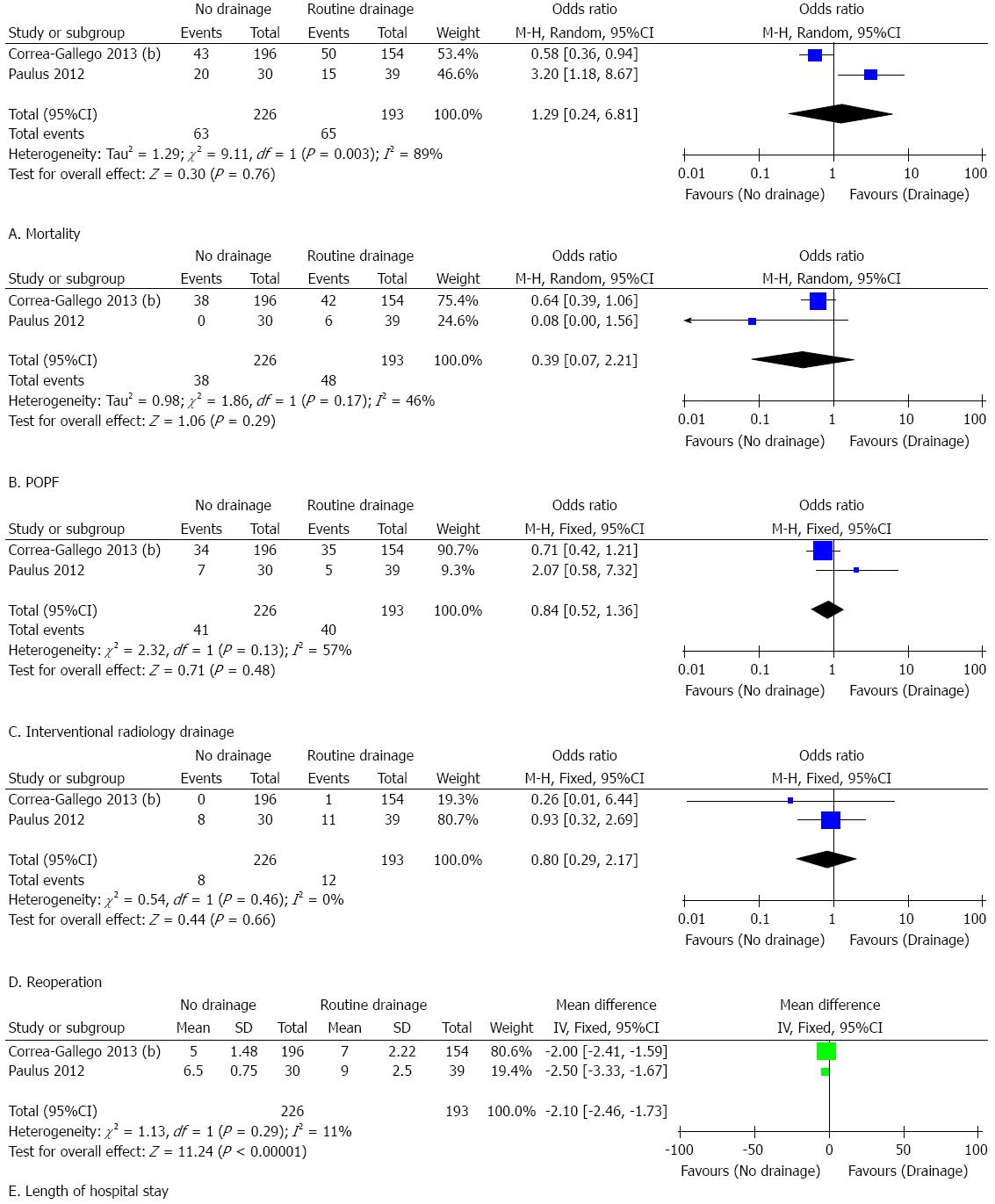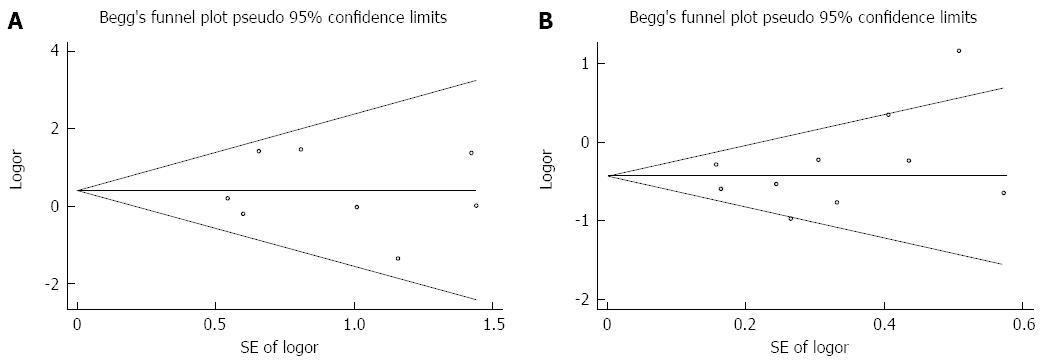Copyright
©The Author(s) 2015.
World J Gastroenterol. May 14, 2015; 21(18): 5719-5734
Published online May 14, 2015. doi: 10.3748/wjg.v21.i18.5719
Published online May 14, 2015. doi: 10.3748/wjg.v21.i18.5719
Figure 1 Flow diagram of literature search and selection.
Figure 2 Forest plots of clinical outcomes in patients with prophylactic drainage vs those without prophylactic drainage after pancreatic resection.
The effect of prophylactic abdominal drainage on A: Mortality; B: Morbidity; C: Postoperative pancreatic fistula (POPF); D: Clinically relevant pancreatic fistula (CR-PF); E: Abdominal abscess; F: Interventional radiology drainage; G: Reoperation; and H: Length of hospital stay.
Figure 3 Forest plots of subgroup analysis of patients who underwent pancreaticoduodenectomy.
For patients who underwent pancreaticoduodenectomy (PD), the effect of prophylactic abdominal drainage on A: Mortality; B: Morbidity; C: Postoperative pancreatic fistula (POPF); D: Clinically relevant pancreatic fistula (CR-PF); E: Abdominal abscess; F: Interventional radiology drainage; G: Reoperation; and H: Length of hospital stay.
Figure 4 Forest plots of subgroup analysis of patients who underwent distal pancreatectomy.
For patients who underwent distal pancreatectomy (DP), the effect of prophylactic abdominal drainage on A: Morbidity; B: Postoperative pancreatic fistula (POPF); C: Interventional radiology drainage; D: Reoperation; and E: Length of hospital stay.
Figure 5 Begg’s funnel plots.
Publication bias based on mortality (A); and overall morbidity (B).
- Citation: Dou CW, Liu ZK, Jia YL, Zheng X, Tu KS, Yao YM, Liu QG. Systematic review and meta-analysis of prophylactic abdominal drainage after pancreatic resection. World J Gastroenterol 2015; 21(18): 5719-5734
- URL: https://www.wjgnet.com/1007-9327/full/v21/i18/5719.htm
- DOI: https://dx.doi.org/10.3748/wjg.v21.i18.5719

















